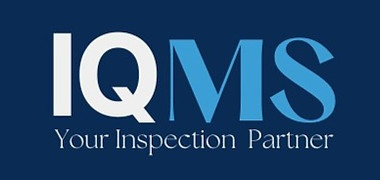Quality control is an essential process in ensuring that products or services meet the established standards and deliver the intended level of satisfaction to customers. A well-structured quality control checklist serves as a crucial tool to ensure consistency and accuracy in this process. However, even with the best intentions, errors can creep into quality control practices, leading to potential issues down the line. In this article, we will explore some of the most common mistakes in quality control checklists and provide insights into how to avoid them.
1. Incomplete or Outdated Checklists
One of the fundamental errors in quality control is using incomplete or outdated checklists. As industries evolve and new best practices emerge, it’s crucial to keep checklists up to date. Outdated information can lead to overlooking critical parameters or including irrelevant ones, ultimately affecting the accuracy of the assessment. To avoid this, establish a regular review process for your checklists, involving relevant stakeholders to ensure that all necessary criteria are included and current.
2. Lack of Clear Instructions
A quality control checklist should provide clear and concise instructions for each item on the list. Vague or ambiguous instructions can lead to inconsistent evaluations and confusion among inspectors. To address this, ensure that each checklist item is accompanied by specific guidelines on what to look for, how to measure it, and the acceptable range of values. Clarity in instructions enhances the reliability of the assessment and reduces the risk of misinterpretation.
3. Ignoring Human Factors
Quality control checklists often focus on technical specifications and objective measurements, but they should also consider human factors. Overlooking factors like user experience, ergonomics, and emotional appeal can result in products that meet technical standards but fail to resonate with the end-users. Incorporate qualitative aspects into your checklist to ensure a comprehensive evaluation that goes beyond the purely technical aspects.
4. Neglecting Continuous Training
Mistakes can arise when the individuals responsible for conducting quality control inspections are not adequately trained. Ongoing training is essential to keep inspectors updated on the latest standards, techniques, and tools. Regular workshops and training sessions can help minimize errors caused by insufficient knowledge and ensure that inspectors are well-equipped to perform accurate evaluations.
5. Overcomplicating the Checklist
While a comprehensive checklist is essential, it’s crucial to strike a balance and avoid overcomplicating the evaluation process. An overly complex checklist with an excessive number of criteria can be overwhelming for inspectors and may lead to errors. Focus on including the most critical parameters that directly impact the quality of the product or service. Simplifying the checklist improves efficiency and reduces the chances of overlooking important aspects.
6. Failing to Account for Variability
In many industries, a certain degree of variability is expected due to factors like raw material variations or environmental conditions. Failing to account for this natural variability in the checklist can lead to false rejections or approvals. Include tolerances or acceptable ranges in your checklist to accommodate such variations without compromising overall quality.
7. Not Gathering and Analyzing Data
Quality control checklists are valuable sources of data that can provide insights into trends and potential areas for improvement. Neglecting to gather and analyze this data is a missed opportunity to enhance the quality control process. Regularly review the data from quality control inspections to identify recurring issues, track performance over time, and implement corrective actions as needed.
8. Lack of Adaptability
Industries and markets are dynamic, and quality control processes need to be adaptable to changes. A rigid checklist that remains unchanged can quickly become obsolete and fail to address new challenges. Encourage feedback from inspectors, incorporate lessons learned, and be prepared to modify the checklist to align with evolving industry standards and customer expectations.
Conclusion,
A well-designed quality control checklist is a powerful tool to ensure the consistency and excellence of products and services. However, avoiding common mistakes is essential to maximize the effectiveness of these checklists. By keeping your checklists updated, providing clear instructions, considering both technical and human factors, investing in continuous training, and embracing adaptability, you can significantly enhance your quality control process and deliver superior results to your customers.



